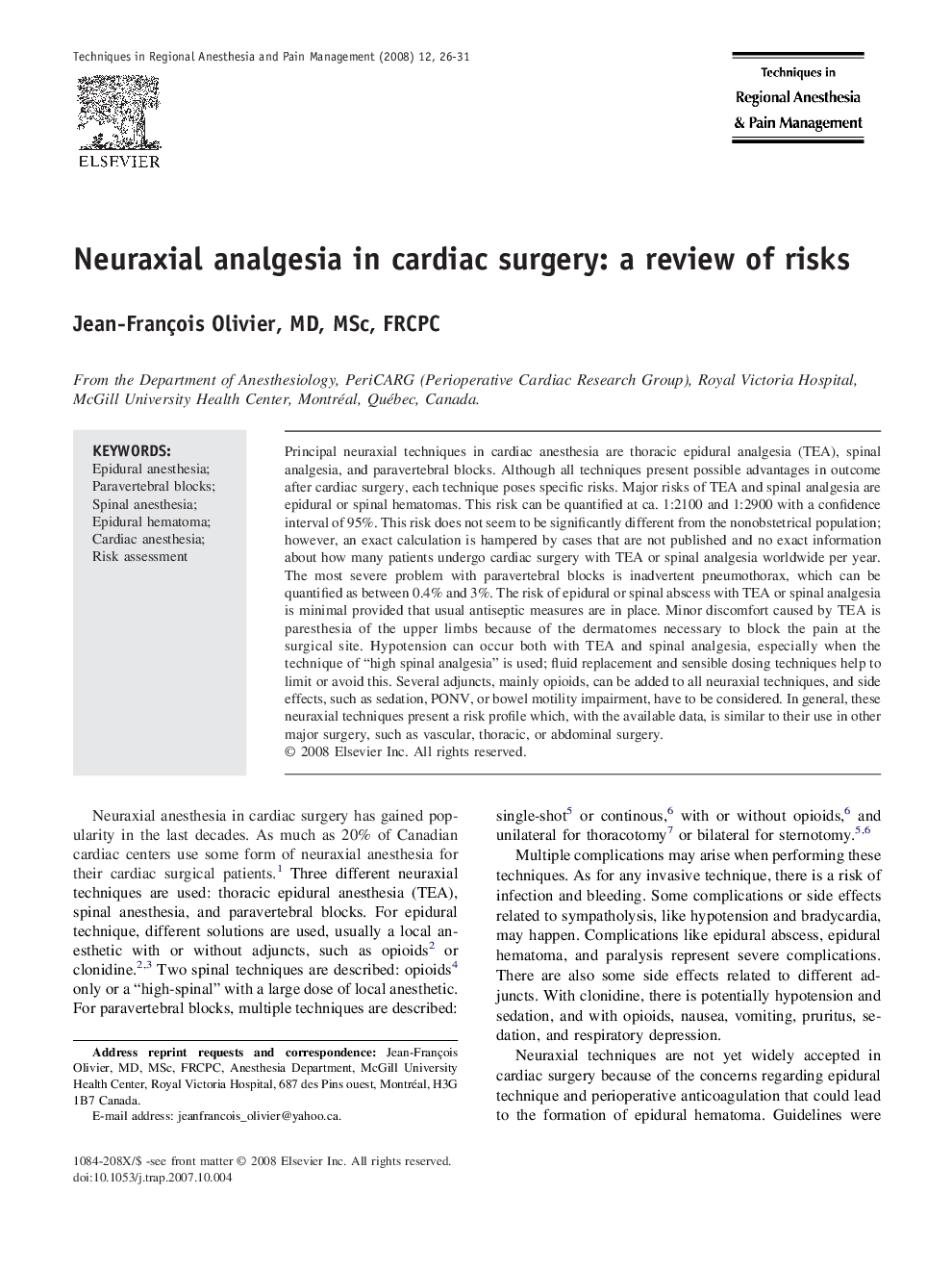| Article ID | Journal | Published Year | Pages | File Type |
|---|---|---|---|---|
| 2772444 | Techniques in Regional Anesthesia and Pain Management | 2008 | 6 Pages |
Abstract
Principal neuraxial techniques in cardiac anesthesia are thoracic epidural analgesia (TEA), spinal analgesia, and paravertebral blocks. Although all techniques present possible advantages in outcome after cardiac surgery, each technique poses specific risks. Major risks of TEA and spinal analgesia are epidural or spinal hematomas. This risk can be quantified at ca. 1:2100 and 1:2900 with a confidence interval of 95%. This risk does not seem to be significantly different from the nonobstetrical population; however, an exact calculation is hampered by cases that are not published and no exact information about how many patients undergo cardiac surgery with TEA or spinal analgesia worldwide per year. The most severe problem with paravertebral blocks is inadvertent pneumothorax, which can be quantified as between 0.4% and 3%. The risk of epidural or spinal abscess with TEA or spinal analgesia is minimal provided that usual antiseptic measures are in place. Minor discomfort caused by TEA is paresthesia of the upper limbs because of the dermatomes necessary to block the pain at the surgical site. Hypotension can occur both with TEA and spinal analgesia, especially when the technique of “high spinal analgesia” is used; fluid replacement and sensible dosing techniques help to limit or avoid this. Several adjuncts, mainly opioids, can be added to all neuraxial techniques, and side effects, such as sedation, PONV, or bowel motility impairment, have to be considered. In general, these neuraxial techniques present a risk profile which, with the available data, is similar to their use in other major surgery, such as vascular, thoracic, or abdominal surgery.
Related Topics
Health Sciences
Medicine and Dentistry
Anesthesiology and Pain Medicine
Authors
Jean-François MD, MSc, FRCPC,
